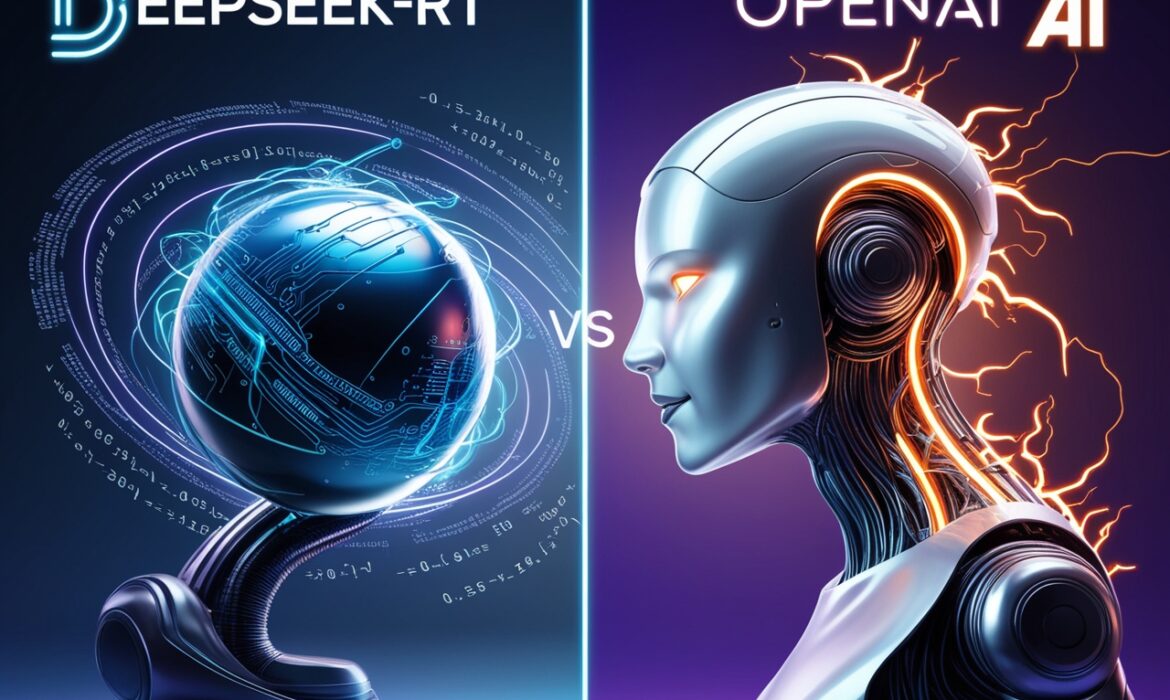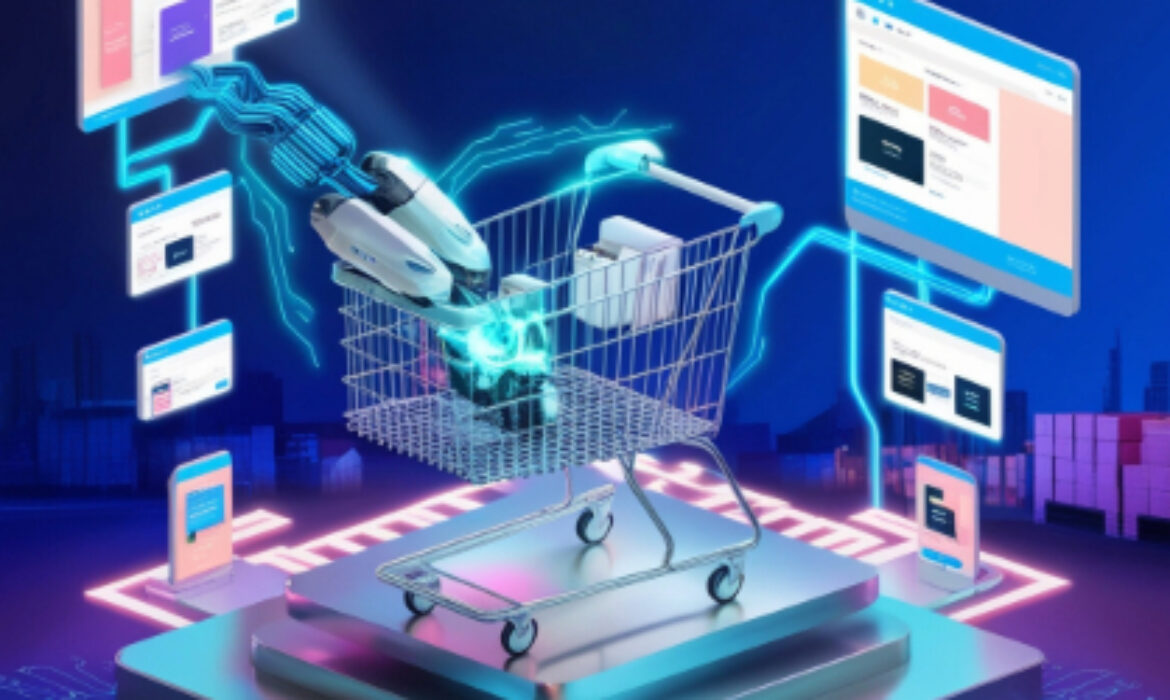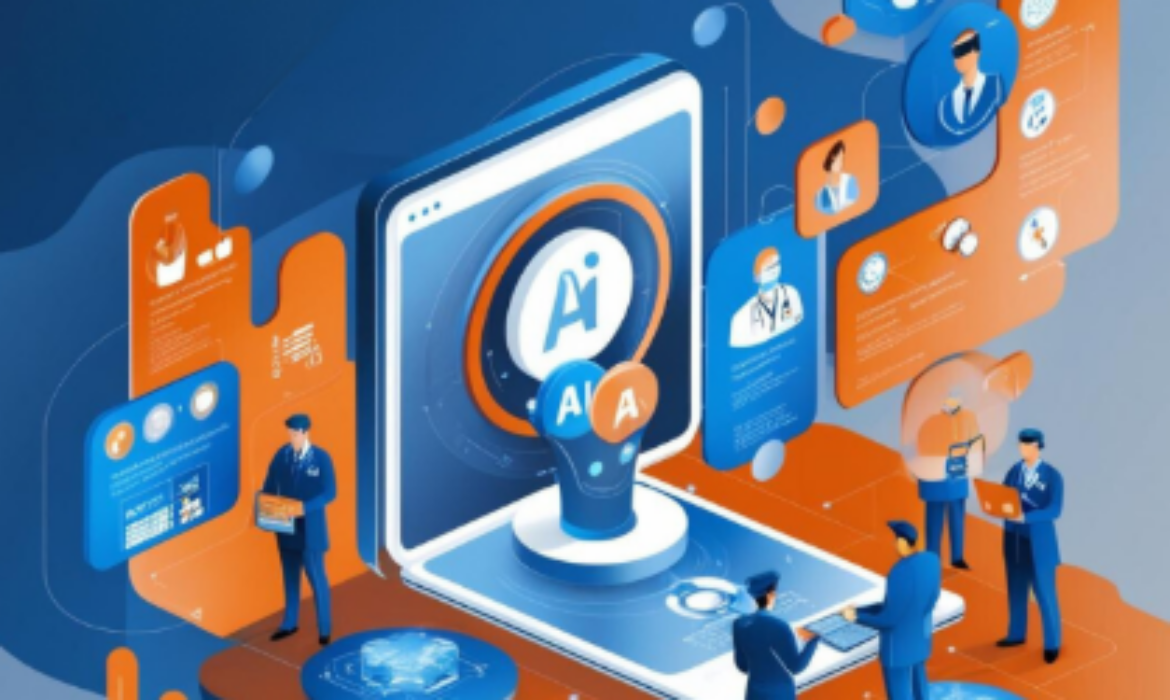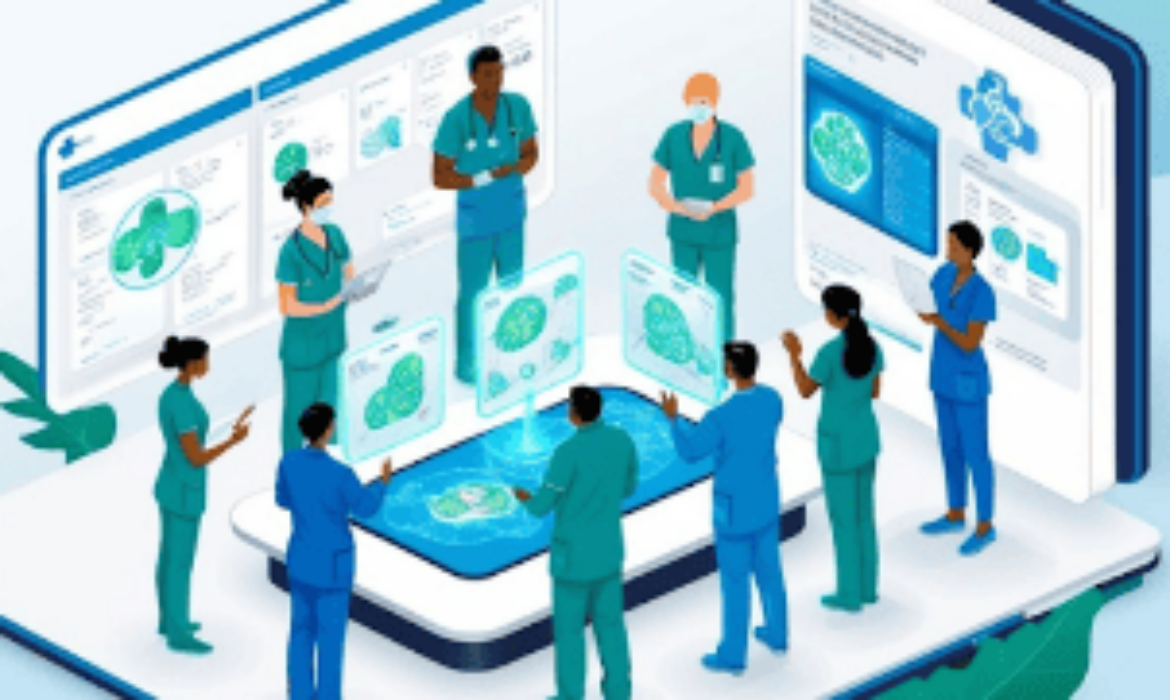DeepSeek-R1 Vs OpenAI: A Clash of Specialized and Versatile AI Models
The emergence of Deepseek, particularly its advanced reasoning model Deepseek R1, has sparked considerable debate within the tech community as it rapidly ascends to become a top-rated free app on the US Apple App Store. Renowned for its innovative application of large-scale reinforcement learning, Deepseek distinguishes itself from traditional AI leaders like OpenAI by delivering impressive results with a more efficient and cost-effective approach. While OpenAI reportedly poured over $100 million into developing its GPT-4 model, Deepseek claims to have achieved comparable breakthroughs in just two months for only $6 million. This stark contrast highlights a significant shift in the AI landscape towards open-source models that are increasingly capable of rivaling proprietary systems.
As Deepseek gains momentum, it is prompting a re-evaluation of established AI development strategies, emphasizing the potential for transformative outcomes through efficient resource utilization and innovative methodologies. The rise of open-source innovation is intensifying the competition with proprietary frameworks, ultimately reshaping the future of artificial intelligence and redefining the trajectory of technological advancement. The ongoing battle between these two approaches suggests a dynamic shift in how AI technologies may be developed and deployed in the coming years.
Why is DeepSeek a Game Changer?
DeepSeek’s emergence in the AI landscape coincides with a critical juncture amid the ongoing tech cold war between the U.S. and China. U.S. export controls on advanced technologies, particularly Nvidia chips, have severely restricted China’s access to cutting-edge AI hardware. Consequently, many Chinese companies have shifted their focus to developing downstream applications, relying on existing models rather than investing in foundational AI systems. This pivot has fostered dependency on Western technologies and created an innovation gap.
With DeepSeek’s rise, there is potential for a significant shift in this dynamic. The startup has demonstrated that substantial AI advancements can be achieved with far less investment than that of proprietary models like OpenAI’s GPT-4. By leveraging large-scale reinforcement learning and efficient resource management, DeepSeek challenges the belief that success in AI development is solely dependent on access to advanced hardware and vast financial resources. This approach not only opens the door for other players in constrained environments but also encourages a rethinking of global AI strategies, promoting open-source methodologies and community-driven initiatives over proprietary technology.
Cost Efficiency: The Economic Advantage of DeepSeek-R1
DeepSeek’s emergence in the AI landscape coincides with a critical juncture amid the ongoing tech cold war between the U.S. and China. U.S. export controls on advanced technologies, particularly Nvidia chips, have severely restricted China’s access to cutting-edge AI hardware. Consequently, many Chinese companies have shifted their focus to developing downstream applications, relying on existing models rather than investing in foundational AI systems. This pivot has fostered dependency on Western technologies and created a gap in innovation.
With DeepSeek’s rise, there is potential for a significant shift in this dynamic. The startup has demonstrated that substantial AI advancements can be achieved with far less investment than that of proprietary models like OpenAI’s GPT-4. By leveraging large-scale reinforcement learning and efficient resource management, DeepSeek challenges the belief that success in AI development is solely dependent on access to advanced hardware and vast financial resources. This approach not only opens the door for other players in constrained environments but also encourages a rethinking of global AI strategies, promoting open-source methodologies and community-driven initiatives over proprietary technology.
OpenAI’s Multifunctional AI Development Strategy
OpenAI’s strategy for AI development focuses on creating versatile, multifunctional models such as GPT-4, capable of addressing a broad spectrum of tasks, including natural language processing and problem-solving in various fields. However, this level of flexibility comes with a significant price tag. OpenAI has reportedly invested over $100 million in the development of GPT-4, a substantial expenditure aimed at ensuring the model performs well across diverse applications. Yet, these high costs can pose barriers to accessibility for smaller competitors.
Despite the cutting-edge nature of OpenAI’s models, their resource-intensive requirements have ignited discussions regarding sustainability and efficiency. As the demand for specialized and cost-effective AI solutions rises, OpenAI’s focus on multifunctionality may encounter competition from more streamlined and affordable alternatives, such as DeepSeek.
Performance Comparison: A Comparative Analysis
Mathematical Reasoning and Coding Tasks
DeepSeek-R1 has shown superior performance in mathematical reasoning and coding tasks, achieving a notable 79.8% accuracy on the AIME 2024 benchmark, slightly outperforming OpenAI’s models which achieved 79.2%.
Versatility and General-Purpose Capabilities
OpenAI’s models, like GPT-4, are celebrated for their versatility and proficiency across a wide array of tasks. They excel in natural language understanding, translation, and creative writing.
Multitask Language Understanding
In the Massive Multitask Language Understanding (MMLU) benchmark, OpenAI’s models have demonstrated higher accuracy rates than DeepSeek-R1, highlighting their extensive knowledge base and competence in diverse subjects.
Future Trends: What Lies Ahead for AI Models
The future of AI models is set for a transformative shift, driven by key trends shaping the industry. Multimodal AI, which integrates text, images, audio, and video, is emerging as a game-changer, enabling more natural interactions and improving accuracy. This evolution toward versatile AI systems will redefine their role in daily life and business operations, making them more adaptive and impactful.
In parallel, cost efficiency and open-source development are expected to democratize AI access, reducing dependency on expensive proprietary systems. Smaller, energy-efficient models will gain traction, fostering sustainability and broader adoption. Additionally, as market fluctuations influence the U.S. dollar’s value, innovation from diverse players will accelerate, reshaping competitive dynamics within the AI landscape.
Agentic AI in Action: Transformative Applications Across Various Sectors
An AI Agent is an advanced system designed to operate autonomously, executing tasks with minimal human involvement. It represents a leap into the automation of artificial intelligence, capable of solving problems independently with little to no guidance. This autonomy allows AI Agents to perform diverse functions across various sectors, significantly boosting efficiency and accuracy.
For example, in the automotive industry, AI Agents drive autonomous vehicles that can navigate through intricate traffic conditions, making instantaneous decisions to ensure safety and dependability. In the financial sector, these agents analyze vast amounts of economic data to provide personalized investment advice, assisting users in optimizing their portfolios. By leveraging AI Agents, industries are undergoing transformative changes, as these systems streamline operations and enhance decision-making through data-driven insights.
The Operational Framework of AI Agents
AI agents function through three core phases: perception, reasoning, and action. In the perception phase, they gather data from their surroundings using sensors like cameras and microphones. For example, temperature sensors in a smart home monitor indoor conditions and adjust settings based on external weather changes. This data collection builds a comprehensive understanding of their environment, enabling the agents to respond effectively.
In the reasoning phase, AI analyzes the collected data using advanced algorithms, such as machine learning and natural language processing, to identify optimal actions. During the action phase, these decisions are executed, like adjusting a thermostat or offering tailored advice. Feedback from their actions allows AI agents to learn and improve over time. By seamlessly integrating these phases, AI agents enhance efficiency and automation, paving the way for intelligent systems to play a transformative role in everyday life.
Striking the Balance: Empowering Agentic AI
The conversation around autonomy and assistance in agentic AI centers on achieving the right equilibrium between empowering users and maintaining control. Autonomy refers to AI systems capable of independent functioning, decision-making, and adaptive learning from their environments—a significant leap from traditional AI reliant on explicit user prompts. While this independence can enhance efficiency and spur innovation, it also raises concerns about accountability, user trust, and the potential erosion of personal agency.
Conversely, assistance-oriented AI emphasizes collaboration, working alongside humans to support decision-making without overshadowing it. This approach amplifies human abilities, fostering creativity, productivity, and a sense of empowerment. By nurturing a cooperative dynamic between humans and AI, we can achieve a harmonious balance that safeguards human agency while delivering peak performance. Ultimately, the goal is to design AI systems that cultivate a symbiotic relationship, driving benefits for individuals and society alike.
Challenges in Adopting Agentic AI Systems
- Accountability and Ethical Issues: A significant challenge in adopting agentic AI systems is the difficulty in understanding their autonomous decision-making processes, which raises concerns about transparency and fairness. Additionally, the presence of embedded biases in AI models can lead to discriminatory outcomes, ultimately undermining trust among users and society.
- Erosion of Human Agency: Another critical issue is the potential erosion of human agency, as over-reliance on autonomous systems may lead users to become passive participants in decision-making. This dependence can diminish essential skills such as critical thinking and problem-solving. Furthermore, users may experience feelings of exclusion, which can undermine their confidence in the technology.
- Security and Privacy Risks: Security and privacy are pressing concerns, given that agentic AI systems require access to extensive datasets. This requirement makes them attractive targets for cyberattacks, and vulnerabilities in their decision-making processes can be exploited. Moreover, the need for large volumes of data increases the risk of privacy breaches.
- Legal and Regulatory Challenges: The legal and regulatory landscape for agentic AI remains inconsistent and underdeveloped, complicating the determination of accountability for failures. Varying regulations across different regions can hinder deployment and innovation, creating further obstacles for the responsible implementation of these systems.
Collaborative Solutions Needed
To effectively address these challenges, it is essential to foster collaborative efforts among developers, policymakers, and stakeholders. This collaboration should focus on establishing ethical frameworks, enhancing transparency in AI operations, and implementing robust security measures. By addressing these issues collectively, we can better harness the potential of agentic AI while mitigating associated risks.
Transformative Applications of Agentic AI Across Industries
Healthcare
Agentic AI is transforming the healthcare sector by efficiently and accurately analyzing extensive medical data. It plays a vital role in early disease detection by meticulously processing imaging data and patient records. AI-driven tools are also utilized to develop personalized treatment plans, and customize therapies to suit the specific needs of individual patients. Moreover, virtual health assistants provide round-the-clock support, answering patient queries and enhancing accessibility. In addition, Agentic AI streamlines administrative functions such as appointment scheduling and billing, reducing the burden on healthcare providers.
Recruiting
In the recruitment industry, Agentic AI optimizes the hiring process by automating resume screening and candidate shortlisting. Its algorithms proficiently evaluate candidates’ skills, experiences, and qualifications to ensure accurate matches with job roles. Additionally, AI helps diminish unconscious bias, promoting diversity and fairness in hiring practices. Chatbots enhance the candidate experience by delivering instant updates, addressing frequently asked questions, and facilitating seamless communication. Overall, these AI tools save time and resources for recruiters, leading to higher-quality hires.
Financial Services
Agentic AI substantially enhances financial services through sophisticated data analysis and predictive capabilities. It allows for real-time detection of fraudulent activities by analyzing transaction patterns and spotting anomalies. AI-powered systems evaluate risk and provide personalized investment advice based on individual user profiles. Chatbots assist customers with a variety of tasks, such as balance inquiries, loan applications, and account management. Furthermore, robo-advisors fine-tune investment portfolios, helping clients achieve their financial goals with precision and efficiency.
Efficient Healthcare Data Management with AI and Vector Databases
In an era defined by data, the healthcare industry finds itself at the pivotal intersection of innovation and necessity. With vast amounts of patient records, research findings, and diagnostic data growing exponentially, traditional methods of managing this information are falling short. Enter vector databases combined with the power of Artificial Intelligence—an alliance transforming the way healthcare data is stored, retrieved, and utilized. This groundbreaking approach is not just about faster processes; it’s about enabling smarter, more accurate decisions that could redefine patient care and medical research. Let’s explore how this synergy is setting a new standard in healthcare data management.
Understanding the Challenges of Healthcare Data Management
Navigating the complexities of healthcare data management poses significant challenges, primarily due to the vast volume and diversity of data generated across various sources. From electronic health records (EHRs) and lab results to medical imaging and data from wearable devices and mobile health applications, the wealth of information can lead to interoperability issues. Different systems often use incompatible formats, complicating efforts to aggregate and analyze data effectively. To overcome these challenges, healthcare organizations must invest in robust data integration solutions, ensuring a comprehensive view of patient health, although such investments can be both time-consuming and costly.
In addition to data integration, maintaining security and privacy is a critical concern in healthcare data management. Patient data is highly sensitive and subject to strict regulations, such as the Health Insurance Portability and Accountability Act (HIPAA), which makes safeguarding this information against breaches a continuous priority for organizations. Increasing cybersecurity threats complicate these efforts, requiring healthcare providers to implement effective protective measures while ensuring compliance—this can strain resources and divert focus from other crucial tasks. Furthermore, issues related to data quality, such as inconsistent data entry and outdated information, can adversely affect patient safety and decision-making. To mitigate these risks, healthcare organizations should focus on establishing strong data governance policies that foster standardized practices and promote regular quality assessments.
Application of AI in Vector Databases
Vector databases are engineered to efficiently store and manage high-dimensional vectors, which are numerical representations generated by AI models such as neural networks. These vectors encapsulate patterns and relationships within unstructured data—like images, text, and audio—using techniques like embeddings. This mapping process groups similar items closer together in a continuous vector space, enabling advanced functionalities such as semantic searches, similarity assessments, clustering, and personalized recommendations. For example, NLP models can convert words or sentences into vectors, facilitating context-based searches beyond simple keyword associations.
After data transformation into vectors, algorithms like K-nearest neighbors (KNN) and approximate nearest neighbors (ANN) enable rapid retrieval based on user queries. Advanced indexing techniques, including Hierarchical Navigable Small World (HNSW) graphs and product quantization, ensure quick data access, even within large datasets. This setup allows for real-time insights and dynamic analytics. Furthermore, AI enhances vector representations through ongoing learning from new data or user interactions, improving system accuracy. The synergy between AI and vector databases is revolutionizing sectors such as e-commerce, healthcare, and social networking by enabling features like anomaly detection and scalable data analysis.
Overcoming Security and Compliance Concerns in Healthcare Data
Healthcare data is highly sensitive, making security and compliance a top priority when adopting new technologies like AI and vector databases. Stringent regulations such as HIPAA (Health Insurance Portability and Accountability Act) mandate that healthcare organizations protect patient privacy and ensure data is handled securely. To meet these requirements, vector databases can incorporate advanced encryption techniques both at rest and in transit, ensuring that data remains protected from unauthorized access. Additionally, role-based access controls (RBAC) and multi-factor authentication (MFA) can further safeguard sensitive information, limiting exposure to only those who need it.
Compliance with regulatory standards extends beyond just securing the data; it also involves ensuring that any AI-driven processes are transparent and auditable. Healthcare organizations must be able to trace how data is used, how decisions are made, and how models arrive at specific insights. AI models integrated with vector databases can be designed to log every action and provide a clear audit trail, ensuring that the system remains accountable and compliant. By embedding these security measures and compliance protocols into the infrastructure, healthcare organizations can confidently leverage AI and vector databases while maintaining patient trust and adhering to legal standards.
Combining AI and Vector Databases for Smarter Data Insights
The combination of AI and vector databases transforms how organizations handle and analyze vast data. Vector databases are designed to efficiently store high-dimensional data, like images, text, and audio, as numerical vectors that capture relationships and patterns within the data. AI models, such as neural networks, play a crucial role by converting unstructured data into these vectors, enabling powerful search and analysis capabilities. This allows for tasks like similarity search, clustering, and personalized recommendations, enhancing data-driven decision-making.
AI-powered embeddings are key to mapping data into a continuous vector space, where similar items are positioned closer together. In practical terms, this means that instead of searching through text or images based on keywords alone, AI can interpret the context and meaning, delivering results based on semantic similarity. For example, in healthcare, AI can match patient data to relevant research papers or treatment options by analyzing historical records and new information. This dynamic data representation allows for real-time insights that are more accurate and context-aware than traditional methods.
As AI continually refines vector representations based on new data, the system becomes smarter over time, providing more precise recommendations and uncovering deeper insights. This integration is revolutionizing industries, offering a more intuitive and powerful way to analyze data and improve user experiences across sectors like e-commerce, healthcare, and social media.
In a nutshell, vector databases are exceptionally suited for healthcare applications due to their effectiveness in managing high-dimensional data, including medical imaging and genomic information. By transforming unstructured data into vector representations, they empower healthcare professionals to conduct advanced analytics, enhancing disease prediction and personalized treatment recommendations. The ability to retrieve data in real time is crucial for timely decision-making in clinical environments while accommodating the growing volumes of data from various health monitoring devices. Additionally, these databases enable complex searches, aiding researchers in uncovering meaningful trends and correlations in patient data. Their integration capabilities provide a comprehensive view of patient health, and the use of AI algorithms allows for continuous performance enhancement. With their scalability, vector databases ensure that healthcare organizations can expand their data management capabilities efficiently, making them vital tools in the dynamic landscape of modern healthcare.
Transforming E-commerce: Key AI Trends Shaping Online Retail
The Evolution of Technology and AI: From Origins to Present Day
Could the journey of technology be considered remarkable, as it drastically changes our interactions with the world? Early milestones like the printing press and telephone laid the groundwork for communication. A pivotal change occurred in the late 20th century with the emergence of the internet, which revolutionized information access and shopping. As e-commerce emerged, businesses began to leverage digital tools to reach wider audiences. This evolution paved the way for AI to transform retail and consumer interactions.
Today, AI leads e-commerce innovation by enhancing personalized shopping and inventory management. Retailers use machine learning algorithms and data analytics for tailored recommendations, improving customer satisfaction and sales. AI-powered chatbots provide instant customer support while automating routine tasks. Furthermore, predictive analytics enable retailers to optimize supply chains and maintain product availability. The partnership between technology and AI will continue to advance the retail sector and enrich the online shopping experience.
How AI is Transforming Workflows in E-commerce Companies
The integration of AI in e-commerce is revolutionizing daily operations, creating efficiencies that result in cost savings, operational accuracy, and an enhanced customer experience. Here’s an overview of the key ways AI is reshaping workflows:
1. Streamlined Customer Support
AI-driven chatbots and virtual assistants are now equipped to handle a large volume of customer inquiries 24/7. By efficiently managing common questions, providing product recommendations, and offering tracking information instantly, AI alleviates the burden on human agents. This enables customer service teams to dedicate their efforts to more complex or sensitive issues that require a personal touch, ultimately improving the customer experience and boosting satisfaction through quicker, more efficient responses.
2. Personalized Shopping Experiences
AI algorithms analyze various customer data—such as browsing history, previous purchases, and time spent on different pages—to generate highly personalized product recommendations. This targeted strategy not only elevates conversion rates but also nurtures a more significant connection between customers and the brand. When shoppers encounter products that align closely with their preferences, it reinforces their loyalty to the brand and encourages repeat purchases.
3. Inventory and Demand Forecasting
AI-powered forecasting tools enable e-commerce companies to maintain optimal stock levels by predicting demand based on seasonal trends, consumer behavior, and various external influences. This proactive method helps prevent overstocking or stockouts, minimizing waste and reducing storage costs. By ensuring that products are available when needed, companies enhance operational efficiency and meet customer expectations for swift and reliable delivery.
4. Enhanced Marketing Precision
AI-driven marketing strategies leverage deep insights into customer preferences and behaviors. By accurately segmenting customers and determining the ideal timing, channel, and message, AI enables marketers to create campaigns that are more likely to engage effectively. This heightened precision maximizes return on investment (ROI), ensuring that marketing budgets are utilized efficiently and that customers receive promotions tailored to their interests, thereby increasing engagement and brand loyalty.
5. Fraud Detection and Security
Utilizing advanced algorithms, AI systems can monitor and identify suspicious activities, such as unusual spending patterns or irregular login locations. By flagging potential fraud in real-time, AI safeguards both customer data and company assets, ensuring a secure shopping experience. Enhanced security fosters trust between customers and the company, as shoppers feel confident that their information is protected, which in turn cultivates loyalty and reduces the risk of reputational harm.
The influence of AI on e-commerce workflows is substantial, offering automation and predictive insights that empower companies to remain competitive, improve customer satisfaction, and boost operational efficiency.
Key Adjustments in Foundation Models for AI Integration
To integrate AI effectively into existing processes, key adjustments to foundation models are essential. These models should be made more adaptable and modular, allowing organizations to customize AI solutions to fit specific needs without overhauling their infrastructure. Enhancing interpretability is also crucial, as stakeholders need to understand how AI influences decision-making, fostering trust and accountability in AI applications.
Additionally, increasing the diversity of training data in foundation models is vital to ensure reliable performance and minimize bias. Training AI systems on comprehensive datasets that represent various demographics leads to outputs that align more closely with real-world scenarios. Ongoing fine-tuning and retraining of models are necessary to keep pace with changing business environments. By focusing on these adjustments, organizations can optimize processes and drive innovation through AI integration.
AI: Personalizing Shopping Experiences at Scale
AI is transforming the retail sector by personalizing shopping experiences on a large scale, effectively addressing individual consumer preferences. By analyzing extensive data sets, including browsing history, purchase patterns, and demographic details, AI algorithms can provide tailored product recommendations that resonate with each shopper. This high level of personalization not only boosts user satisfaction but also cultivates brand loyalty, as customers feel valued and understood. Additionally, AI can implement dynamic pricing strategies, offering discounts or incentives based on user behavior, further encouraging purchases. The result is a more engaging shopping experience that drives increased conversion rates for retailers.
Beyond recommendations, AI technology enhances personalization through targeted marketing campaigns and customer engagement strategies. For instance, AI can evaluate customer interactions across various platforms, enabling brands to send personalized emails, notifications, or promotions that align with individual interests. This multi-channel approach guarantees that consumers receive relevant messaging, which enhances the likelihood of conversion. Furthermore, AI-driven chatbots offer real-time assistance, addressing queries and suggesting products based on users’ immediate needs. Ultimately, by leveraging AI’s capabilities, retailers can craft seamless and customized shopping journeys, significantly elevating the overall consumer experience.
Transforming Healthcare Management: Overcoming Challenges with AI Solutions
History of Healthcare Management
Healthcare management has historically grappled with numerous challenges, such as rising costs and administrative inefficiencies. For example, before the introduction of AI, hospitals often relied on cumbersome paper-based systems for patient records, which were prone to errors. A nurse might accidentally misread a patient’s handwritten chart, potentially leading to incorrect medication administration. These outdated practices not only delayed care but also strained healthcare professionals, ultimately compromising patient outcomes and increasing operational burdens.
The introduction of AI is revolutionizing healthcare management by enabling accurate data analysis and streamlining administrative tasks. For instance, AI-driven tools like chatbots can handle patient inquiries, schedule appointments, and provide medical information, significantly reducing the workload on administrative staff. Additionally, AI algorithms can analyze patient data to predict health risks, allowing providers to offer proactive care. This not only improves decision-making and enhances patient care but also fosters a more responsive healthcare system, ultimately leading to better experiences for both patients and providers.
AI’s Impact on Healthcare Administrative Processes
AI is transforming healthcare administration by optimizing processes like appointment scheduling. Platforms such as Zocdoc use AI to match patients with providers based on availability and preferences, reducing double bookings and no-shows. This approach streamlines scheduling and allows healthcare staff to focus on delivering quality care.
In billing and claims processing, AI platforms like Olive AI automate repetitive tasks, from extracting billing information to verifying codes. This reduces errors and speeds up payment processes, benefiting both healthcare providers and patients. By automating these tasks, AI allows staff to dedicate more time to patient-focused activities.
Key Challenges in Healthcare Management AI
Inconsistent Data Quality
AI systems require accurate and high-quality data, but many healthcare organizations struggle with inconsistent or fragmented information across various systems. For example, when a hospital’s electronic health record (EHR) system does not integrate with its lab results system, critical data may be missing, leading to inaccurate diagnoses or treatment recommendations.
Fragmented Systems
Interoperability, or the ability of different systems to communicate and exchange data seamlessly, is a significant challenge for healthcare organizations. Disparate software solutions may hinder coordinated care; for instance, a patient’s medical history recorded at one hospital might not be accessible to another using a different platform, complicating AI’s ability to provide comprehensive insights.
Navigating Regulatory Landscapes
Healthcare is a heavily regulated field, and integrating AI technologies must comply with strict guidelines regarding patient data privacy and security, such as those outlined by HIPAA in the United States. This regulatory complexity can impede the adoption of AI, as organizations may risk legal penalties if they do not adhere to these requirements.
Cultural Resistance to Innovation
Introducing AI technologies can meet resistance from healthcare professionals who are used to traditional methods. Many may fear job displacement or question the reliability of AI systems. For example, radiologists may hesitate to adopt AI diagnostic tools due to concerns about their expertise being undermined. Overcoming this resistance necessitates effective training and demonstrating AI’s ability to enhance human decision-making.
Improving Patient Care Through AI Innovations
AI innovations are transforming patient care by enhancing diagnosis, treatment, and personal engagement. Intelligent algorithms analyze vast amounts of healthcare data—including medical histories, imaging, and genomics—to identify patterns and predict patient outcomes, enabling earlier and more accurate diagnoses. For instance, AI-powered diagnostic tools can assist medical professionals in detecting diseases at earlier stages, improving treatment efficacy. Additionally, AI-driven chatbots and virtual health assistants provide patients with immediate access to information and support, enhancing engagement and adherence to treatment plans.
Moreover, predictive analytics in AI can help healthcare providers anticipate potential complications, leading to timely interventions that improve patient safety. AI can also optimize resource allocation within hospitals, streamlining operations to improve patient throughput and reduce wait times. Overall, the integration of AI into healthcare systems fosters a more personalized, proactive approach to patient care, ultimately resulting in better health outcomes.
Data Security and Privacy in AI-Driven Systems
Data security and privacy are paramount in AI-driven systems, particularly in healthcare, where sensitive patient information is involved. Ensuring that AI applications comply with strict regulations, such as HIPAA, is essential to protect personal health data from breaches and misuse. Implementing robust encryption, access controls, and continuous monitoring helps safeguard data integrity. Additionally, organizations must address ethical concerns regarding data usage, ensuring transparency and patient consent in AI systems, thereby fostering trust and compliance while enhancing the effectiveness of AI technologies.
Text-to-Image Generation in Healthcare: Exploring Its Impact
The Rise of AI in Healthcare: A New Era of Visualization
Integrating artificial intelligence in healthcare advances the visualization and interpretation of complex medical data. Traditionally, professionals relied on static imaging techniques like X-rays and MRIs, which required skilled interpretation. With AI-powered technologies, however, vast datasets can be analyzed rapidly to produce dynamic visual representations, enhancing understanding and decision-making. This shift is particularly impactful for diagnosing complex conditions, where AI can reveal patterns that may be difficult to discern through conventional methods.
AI-driven visualization is also crucial in personalizing patient care. By synthesizing data from electronic health records, lab results, and genetic information, AI generates comprehensive visual models of a patient’s health, enabling clinicians to assess risks and tailor treatment plans more effectively. For example, text-to-image generation systems can convert clinical descriptions into detailed visuals, providing clearer insights into patient anatomy and pathology. As this technology advances, AI’s role in transforming healthcare visualization will lead to improved health outcomes and more informed decision-making.
Additionally, AI visualization fosters collaboration among interdisciplinary healthcare teams. Radiologists, surgeons, and specialists can share interactive visualizations, enhancing communication and improving outcomes during complex cases. As demand for efficient, patient-centered care increases, AI’s ability to bridge information gaps positions it as a vital force in reshaping healthcare delivery. This convergence of advanced visualization tools and AI technology promises innovations that streamline operations while elevating the quality of care patients receive.
How Text-to-Image Generation Works: Behind the Technology
Text-to-image generation leverages advanced artificial intelligence techniques, primarily using deep learning algorithms such as generative adversarial networks (GANs) and transformer models. In this process, GANs consist of a generator and a discriminator: the generator creates images from text prompts, while the discriminator evaluates their authenticity. Through iterative training, the generator improves the quality and relevance of its outputs, transforming abstract concepts into visually compelling representations. This dynamic interaction enables the creation of images that can range from realistic to artistic, based on the input description.
These systems utilize extensive datasets that pair text and images, allowing models to learn complex associations between language and visuals. When a user provides a descriptive prompt, the model generates an image that encapsulates the essence of the description, considering context and details. Such capabilities can significantly enhance diagnostics, patient education, and treatment planning in healthcare. For example, clinicians could generate visual representations of medical conditions based on written descriptions, improving understanding and communication. As technology continues to evolve, integrating text-to-image generation into clinical workflows holds great promise for enhancing visualization tools in healthcare.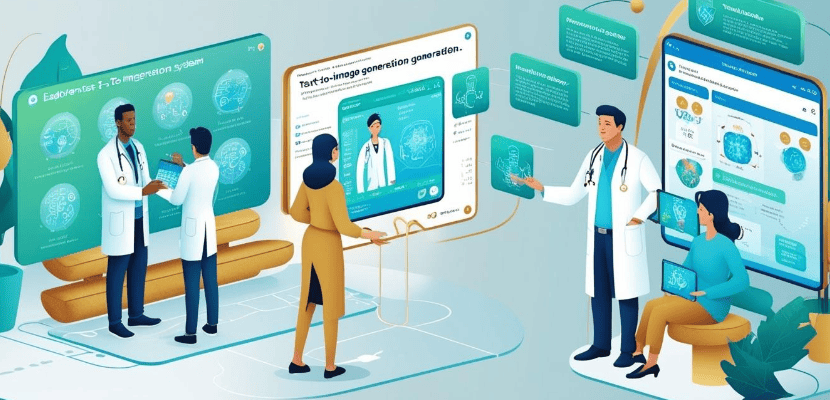
Open-Source Platforms Advancing Medical Imaging Innovations
Open-source platforms are pivotal in advancing medical imaging innovations, providing researchers with collaborative tools that enhance diagnostic capabilities. By granting access to source code, these platforms promote shared knowledge and rapid development, allowing teams to refine algorithms and imaging techniques. Popular platforms like 3D Slicer and ITK-SNAP enable customization for specific clinical needs, driving real-world innovation. The transparency of open-source software fosters trust and security, which are essential in healthcare. Consequently, these platforms accelerate technological advancements and deliver adaptable solutions in medical imaging.
The impact of open-source platforms is significant across medical imaging applications, from diagnostics to treatment planning. They support the development of sophisticated algorithms for image analysis, improving the accuracy of identifying abnormalities. Machine learning integration further enhances predictive analytics, aiding personalized treatment strategies. Additionally, these tools facilitate real-time collaboration among clinicians, essential for multidisciplinary care. As adoption grows, the potential for standardization in imaging practices increases, ultimately benefiting patient outcomes. This synergy between open-source innovation and healthcare is shaping the future of medical imaging.
Patient Engagement: Visual Tools for Better Understanding
Visual tools are essential in improving patient engagement by making complex medical information easier to understand. Diagrams, infographics, and interactive models help healthcare providers communicate diagnoses and treatment options effectively. By simplifying medical jargon, these aids empower patients to actively participate in their care decisions. This increased understanding leads to better adherence to treatment plans and enhanced health outcomes. Additionally, visual tools encourage collaboration between patients and providers, fostering open dialogue and trust.
These tools also accelerate medical discoveries by improving communication among researchers and clinicians. Visual representations of complex data help streamline the analysis and interpretation of clinical findings. Collaborative platforms utilizing visualization techniques can enhance research workflows and innovation in treatment development. Moreover, when patient-generated data is visualized, it offers valuable insights into treatment effectiveness. As visual tools advance, their impact on patient engagement and medical discoveries will continue to grow.
Future Trends: What’s Next for Text-to-Image Systems in Healthcare
The future of text-to-image technology in healthcare holds transformative potential, revolutionizing diagnostics, patient education, and medical training. With ongoing advancements in machine learning, these systems are increasingly capable of generating high-quality, contextually accurate images from detailed textual descriptions. This progress empowers healthcare professionals to visualize complex medical scenarios with greater precision. For instance, surgeons may soon create visual representations of anatomical structures based on surgical notes, enhancing preoperative planning and potentially improving surgical outcomes. Furthermore, integrating text-to-image systems with electronic health records (EHRs) could enable the automatic generation of educational materials specific to patient conditions, leading to improved understanding, engagement, and adherence to medical guidance.
In medical research and training, text-to-image systems promise impactful applications. Researchers can use them to produce illustrative images that convey study findings, making complex data more accessible to colleagues and the public. For medical trainees, the ability to visualize rare conditions or intricate cases will foster a deeper understanding and greater familiarity with diverse clinical presentations. As collaboration between developers, healthcare providers, and regulatory bodies strengthens, ethical frameworks will safeguard patient privacy while maximizing the utility of these tools. Altogether, text-to-image systems are poised to advance both patient care and medical education, bridging gaps in understanding and contributing to better healthcare outcomes.
AI-Enhanced Data Integration Solutions for AWS Supply Chain
AI Streamlines Data Integration in AWS Supply Chains
AI streamlines data integration in AWS supply chains by automating and optimizing data processing from various sources, such as suppliers, inventory systems, and logistics platforms. Leveraging AWS services like Amazon S3 for data storage and Amazon Kinesis for real-time data streaming, AI algorithms efficiently analyze, categorize, and clean vast datasets. AI-powered tools like Amazon SageMaker enable machine learning models to predict demand, track inventory, and optimize logistics, reducing human error and improving decision-making.
With AI, supply chain data is processed faster and more accurately, allowing businesses to respond to market fluctuations and customer needs in real time. AWS IoT services also integrate with AI to manage and monitor IoT devices across the supply chain, providing real-time visibility into operations. By automating data integration and leveraging predictive analytics, AI and AWS enable supply chains to be more responsive, agile, and efficient in today’s competitive landscape.
Real-Time Data Processing in Supply Chains
Real-time data processing in supply chains allows companies to instantly collect and analyze data from various sources, such as IoT devices and logistics systems. This enables quick adjustments and decision-making to improve operations, optimize inventory, and manage delivery schedules. By leveraging cloud platforms like AWS, businesses can continuously monitor supply chain activities and respond immediately to disruptions or changes.
The process works through IoT sensors embedded in vehicles or equipment, transmitting data to cloud services like AWS Lambda or Amazon Kinesis. AI and machine learning algorithms then analyze this data in real-time, allowing companies to detect potential issues and make proactive adjustments. This combination of real-time insights and rapid decision-making leads to greater efficiency, reduced delays, and enhanced overall performance.
Predictive Analytics in AWS Supply Chain Management
Predictive analytics in AWS supply chain management harnesses AI to forecast future outcomes from historical and real-time data. By analyzing data from inventory systems and customer demand, AI models can anticipate demand fluctuations, optimize inventory levels, and pinpoint potential disruptions in the supply chain.
With AWS services like Amazon SageMaker, businesses can create and deploy machine learning models that efficiently process large datasets. These models facilitate proactive decision-making, enabling companies to identify challenges in advance and make informed adjustments to enhance efficiency and reduce costs. By integrating AI-driven predictive analytics, organizations gain crucial insights into supply chain trends, leading to more accurate demand planning, improved resource allocation, and a more agile, resilient supply chain.

Challenges and AI Solutions in Supply Chain Management
Global Economic Uncertainty: Economic fluctuations, geopolitical tensions, and inflation create challenges for supply chains by causing unpredictable demand and rising costs. However, AI improves predictive analytics, enabling companies to forecast demand accurately and anticipate cost increases. This proactive strategy allows businesses to adapt quickly, maintain operational efficiency, and navigate market uncertainties with greater resilience.
Technological Integration: While integrating technologies like AI, IoT, and blockchain can be complex and costly, AI simplifies the process by providing smarter interfaces and automating data management. It reduces the burden of data collection and processing, allowing companies to focus on meaningful analysis. AI also eases employee resistance to change by improving system usability, making the adoption of new technologies smoother and more efficient.
Inventory Management Issues: AI significantly improves inventory management by enhancing demand forecasting through predictive analytics. It helps prevent stockouts and overstocking by analyzing data and market trends. AI-driven tools also recommend optimal stock levels based on real-time conditions, ensuring efficient and adaptive inventory management.
Cybersecurity Threats: As logistics systems digitize, the risk of cyber-attacks increases, posing ongoing challenges for data protection and operational security. AI enhances cybersecurity by deploying advanced threat detection systems that analyze network traffic and detect patterns indicating potential attacks. Additionally, AI automates incident response, improving security protocols and ensuring more efficient, comprehensive protection.
Supply Chain Disruptions: Natural disasters, pandemics, and political instability can disrupt supply chains, with COVID-19 revealing critical vulnerabilities. AI enhances risk assessment and management by predicting disruptions through real-time data analysis. Machine learning algorithms identify patterns signaling potential issues, allowing companies to take proactive measures and develop contingency plans, ultimately strengthening supply chain resilience.
Future Trends: The Evolving Landscape of AI in Supply Chains
AI can significantly enhance logistics and supply chain management related to goods and services by addressing common challenges. For instance, AI-driven predictive analytics can improve demand forecasting for various products and services amid global economic uncertainties, while automation technologies can alleviate labor shortages by handling repetitive tasks in warehouses and distribution centers, thus boosting overall efficiency. Additionally, AI can optimize transportation routes for the delivery of goods, reducing rising costs through efficient logistics planning.
In terms of supply chain disruptions affecting goods and services, AI enhances risk management by predicting potential issues through real-time data analysis, allowing companies to develop proactive contingency plans. Meanwhile, AI can elevate customer experiences by providing real-time tracking of deliveries, automating customer inquiries with chatbots, and personalizing services according to consumer preferences.
Furthermore, AI helps with regulatory compliance by monitoring changes affecting the transport of goods and services and identifying potential issues, while optimizing operations for sustainability through energy-efficient routing and waste reduction in packaging and distribution. In inventory management, AI-driven analytics allow for better demand forecasting, helping businesses navigate stock levels for both goods and services effectively. Overall, AI technologies streamline operations and improve resilience in logistics, addressing contemporary challenges effectively.
Empowering Retail Growth with Scalable Cloud Infrastructure
Consumer demands are rapidly changing, forcing retailers to adapt their supply chain, inventory management, and customer engagement strategies to remain competitive. As expectations shift, the importance of cloud infrastructure in driving retail growth becomes more pronounced. Cloud technology offers the scalability and agility needed to address fluctuating customer demands, particularly during peak seasons and promotional events. By leveraging cloud solutions, retailers can optimize operations and enhance the overall customer experience. This adaptability is essential for sustainable growth in a dynamic retail landscape.
In today’s digital-first environment, consumers expect convenience, personalization, and seamless experiences across both online and physical channels. Cloud infrastructure helps retailers meet these demands by centralizing data and streamlining processes by utilizing data analytics, artificial intelligence, and machine learning and gains valuable insights into consumer behavior and preferences. This knowledge allows for refined marketing strategies and optimized inventory management. Embracing cloud technology enables retailers to navigate the evolving retail sector with agility and efficiency, positioning them for long-term success.
Role of Cloud Infrastructure in Retail Transformation
Cloud infrastructure is transforming the retail industry by offering unparalleled scalability, especially during peak shopping seasons. Thanks to the elasticity of cloud computing, retailers can dynamically adjust computing resources to handle spikes in web traffic and transactions effortlessly. With features like cloud-based load balancing and content delivery networks (CDNs), retailers can optimize performance and minimize latency during high-demand periods. Additionally, autoscaling capabilities allow retailers to automatically scale resources, ensuring seamless operations during peak times and enhancing the customer experience.
Moreover, cloud infrastructure provides robust data management solutions essential for modern retail. Retailers can securely store and analyze vast amounts of customer data, sales transactions, and inventory details, gaining key insights into consumer behavior, preferences, and market trends. This data-driven approach enables personalized marketing strategies and optimized product offerings, driving customer loyalty and business growth. By leveraging cloud-based data management, retailers can run targeted campaigns, predict demand, and improve the customer experience across multiple channels, strengthening their competitive edge in the retail market.
Meeting Growing Retail Demands Seamlessly
Scalable cloud solutions are essential for retailers to manage fluctuating customer demands, especially during peak seasons. With cloud infrastructure, retailers can dynamically adjust their operations to handle varying levels of demand, ensuring consistent performance and high customer satisfaction during high-traffic periods. Cloud-based load balancing and content delivery networks (CDNs) allow retailers to efficiently manage web traffic, reduce latency, and enhance the shopping experience.
Additionally, cloud technology empowers retailers to leverage advanced data management and analytics for informed decision-making based on market trends and consumer behavior. By securely storing and analyzing large volumes of customer data, retailers can refine marketing strategies, predict demand, and optimize product offerings to align with changing customer preferences. Cloud-based solutions seamlessly integrate big data and analytics, enabling targeted campaigns and enhancing the customer experience across multiple channels, demonstrating the agility and customer-centric approach necessary to meet the evolving demands of the retail industry.

Maximizing Retail Efficiency with Cloud Infrastructure
Heightened data security: Cloud infrastructure provides robust data security measures, including encryption, access controls, and regular backups, safeguarding sensitive customer information and business data from potential threats.
Enhanced user experience: By leveraging cloud technology, retailers can deliver seamless and personalized experiences across multiple touchpoints, ensuring a cohesive and responsive interaction with customers, and ultimately fostering brand loyalty.
Improved inventory management: Cloud-based inventory systems enable real-time tracking, demand forecasting, and automated replenishment, optimizing stock levels, reducing holding costs, and minimizing stockouts, thereby improving operational efficiency.
Effective disaster management: Cloud infrastructure offers data redundancy, off-site backups, and disaster recovery capabilities, ensuring minimal disruptions and swift recovery in the event of unforeseen incidents such as system failures or natural disasters.
Increased profitability: The agility and scalability of cloud solutions support cost-efficient operations, enabling retailers to respond swiftly to market demands, reduce infrastructure costs, and allocate resources effectively, ultimately contributing to increased profitability and sustainability.
Cloud Shapes Future Retail Growth Landscape
In the future, cloud technology is set to revolutionize retail, driving efficiency and personalized experiences. Retailers will increasingly rely on cloud-based solutions for real-time data analytics and operational agility across digital and physical channels. The integration of AI, machine learning, and IoT with cloud computing will enhance engagement and enable retailers to adapt to changing market dynamics.
Cloud technology’s future in retail growth also promises improved resilience and adaptability, empowering retailers to swiftly respond to market shifts and disruptions. This flexibility will enable retailers to thrive in a competitive digital landscape by enhancing operational agility and driving growth through data-driven strategies.
Leveraging Generative AI for Healthcare Insights: A Guide for SMEs
Revolutionizing Healthcare SMEs with Generative AI
Generative AI is transforming the healthcare landscape for Small and Medium-sized Enterprises (SMEs) by facilitating the effective utilization of expansive datasets. This advanced technology empowers SMEs to extract valuable insights from their healthcare data, improving operational efficiency and more informed decision-making. By leveraging Generative AI, SMEs can optimize patient care through more accurate diagnoses, personalized treatment plans, and streamlined administrative processes, ultimately enhancing patient outcomes and resource management.
Furthermore, Generative AI enables healthcare SMEs to stay competitive in the dynamic healthcare industry by offering tailored, cost-effective solutions that drive advancements in healthcare delivery and operational effectiveness. With this technology, SMEs can navigate the complexities of modern healthcare, unlocking new opportunities for growth, efficiency, and improved healthcare delivery while effectively managing resources and staying at the forefront of innovation in the sector.
Turning Data into Actionable Health Insights with AI
AI is a game-changer in healthcare as it allows professionals to uncover intricate patterns and correlations within vast datasets for better diagnostics and personalized care. Its predictive analytics capabilities enable accurate projections of patient outcomes and personalized preventive interventions, enhancing chronic disease management and refining treatment strategies.
Moreover, AI serves as an asset in augmenting clinical decision support, offering evidence-based treatment recommendations and real-time alerts that streamline care pathways. Its effectiveness extends to image analysis, particularly in radiology, pathology, and dermatology, where deep-learning models swiftly interpret medical images for diagnostics. AI’s natural language processing capabilities contribute to improved documentation and research analysis. Additionally, AI-driven applications enhance patient engagement and remote monitoring, empowering individuals to manage chronic conditions and enabling crucial early intervention practices for optimal health outcomes.
AI and Analytics: Improving Patient Care Operations
AI and analytics are revolutionizing patient care by enabling personalized and efficient delivery using data. Through AI-driven predictive analytics, healthcare organizations can anticipate and address potential health issues proactively, improving outcomes and resource allocation. This shift to preventive care reduces readmissions and boosts long-term health management, offering tailored treatments for greater patient satisfaction and improved health results. AI identifies hidden data patterns for precise diagnoses and early intervention, enhancing overall care quality.
Moreover, AI streamlines healthcare operations by automating administrative tasks, accelerating diagnoses, and enhancing treatment plans. This automation improves accuracy, patient experiences, and reduces errors, freeing up time for healthcare professionals to focus on patient care efficiently. AI optimizes resource allocation, ensuring cost-effective and sustainable care delivery, and fostering a high-quality and cost-efficient healthcare environment for patients and providers.
Affordable AI Implementation Strategies for SMEs
1. Utilize Cloud Services: Leveraging cloud-based AI platforms allows SMEs to access advanced AI capabilities without the need for significant upfront investments in hardware or infrastructure. They can benefit from pay-as-you-go models, scaling resources based on their needs while avoiding costly infrastructure setups.
2. Open-Source AI Tools: Utilizing open-source AI tools and libraries can significantly reduce software licensing costs for SMEs. These tools provide a cost-effective way to implement AI solutions, as the development and customization can be done in-house or with the help of the online community.
3. Partner with AI Service Providers: Collaborating with AI service providers or consulting firms specializing in affordable AI solutions can offer SMEs access to expertise in developing and deploying AI applications within budget constraints. These partners can help tailor AI solutions to meet specific business needs while keeping costs in check.
4. Scalable AI Platforms: Embracing scalable AI platforms, such as machine learning as a service (MLaaS), allows SMEs to pay only for the AI resources and services they use. This flexibility enables them to optimize cost-efficiency by avoiding unnecessary expenses on underutilized AI resources.
According to a recent report, 72% of executives believe that despite the growing potential of generative AI, only 5% of businesses have successfully developed and implemented generative AI projects. This highlights a significant gap between the technology’s capabilities and its adoption in the corporate world. Many companies are still in the early stages of exploring how to integrate AI into their operations, missing out on its transformative benefits. However, executives recognize the immense potential generative AI holds to revolutionize industries, suggesting that a wider implementation shortly could drastically improve innovation and efficiency across sectors.
Role of AWS Select Partners: Healthcare AI
An AWS Select Partner can provide valuable assistance to small and medium-sized enterprises looking to leverage generative AI for healthcare insights in several ways:
1. Technology Expertise: They can offer expertise in implementing AWS services specifically tailored for generative AI applications in healthcare. This includes selecting the right AWS tools, such as Amazon SageMaker, to build, train, and deploy machine learning models for healthcare data analysis.
2. Custom Solutions: AWS Select Partners can help SMEs develop custom generative AI solutions tailored to their healthcare data and insights needs. This could involve creating algorithms that generate insights from medical imaging data, patient records, or clinical trial data.
3. Compliance and Security: Partners can guide SMEs in ensuring that their generative AI solutions meet healthcare industry standards and compliance requirements, such as HIPAA, and help implement best practices for securing and protecting sensitive healthcare data on AWS.
4. Training and Support: Partners can provide training and support to SMEs, helping them understand how to use generative AI models effectively to derive valuable healthcare insights and integrate these models into their existing workflows.
5. Cost Optimization: They can assist SMEs in optimizing their AWS usage and costs for generative AI solutions, ensuring that the infrastructure is scalable and cost-efficient while delivering the required healthcare insights.
By offering expertise, tailored solutions, compliance guidance, and ongoing support, an AWS Select Partner can play a critical role in helping SMEs successfully leverage generative AI for healthcare insights.
From Data to Insight: GPT Models Transform Machine Learning
GPT Models: Methods and Considerations
Training GPT models involves a meticulous process that ensures the model can generate meaningful and coherent text. The process begins with pre-training, where the model is exposed to vast datasets to learn the structure, grammar, and context of language. During this stage, the model identifies patterns and relationships between words, phrases, and sentences. Once pre-trained, the model can generate general text, but to make it more useful for specific tasks, fine-tuning is essential. Fine-tuning involves adjusting the model on a smaller, task-specific dataset, which allows it to learn particular nuances related to the use case. This step improves the model’s performance on tasks like question answering, text summarization, or sentiment analysis.
Another key aspect of GPT model training is transfer learning, where knowledge gained from the pre-trained model is applied to new tasks. By leveraging a pre-trained base, transfer learning reduces the need for large datasets and shortens the time required to train a model from scratch. This method enables GPT models to quickly adapt to domain-specific challenges, providing customized and accurate results with less computational effort. Considerations like managing overfitting and ensuring data diversity are vital to maintaining a model’s generalization capabilities, making fine-tuning and transfer learning both critical steps in the effective deployment of GPT models.
Insights Extraction: How GPT Models Analyze Data
GPT models are powerful tools that utilize advanced natural language processing techniques to effectively analyze both structured and unstructured data. Their ability to detect patterns and relationships within structured data, often found in databases and spreadsheets, allows GPT models to excel in tasks such as data summarization and predictive analysis. Organizations can harness these capabilities to extract valuable insights from large datasets, facilitating improved decision-making grounded in historical trends. Additionally, when dealing with unstructured data—such as text, images, and multimedia—GPT models showcase their proficiency in processing vast amounts of information. They can identify significant themes, sentiments, and anomalies, transforming raw data into actionable insights that enhance customer experiences and deepen understanding of market dynamics across various industries.
The adaptability of GPT models spans several sectors, including finance, healthcare, and marketing, enabling organizations to derive critical insights for informed decision-making. In the financial sector, these models can assess market sentiment and predict economic trends, while in healthcare, they improve patient care by extracting insights from feedback and medical literature. In marketing, GPT models empower brands to understand consumer behavior through the analysis of unstructured data, enabling more targeted campaigns and enhanced customer engagement. As indispensable tools for organizations aiming to fully leverage their data, GPT models are pivotal in driving strategic, data-informed decisions by extracting meaningful insights from a wide range of data sources.

Improving Decisions Using GPT-Powered Analytics
Utilizing GPT-powered analytics for decision-making taps into the advanced capabilities of the Generative Pre-trained Transformer (GPT) model to uncover valuable insights from a variety of datasets. GPT is particularly effective in analyzing unstructured data, such as text and images, by identifying complex patterns and trends. This enhances the decision-making process by automating tasks like data analysis and natural language processing, allowing organizations to extract actionable intelligence from intricate data sources.
Ensuring the accuracy of GPT-powered analytics requires continuous refinement, including fine-tuning model parameters, ongoing training, and validating outputs. This process helps maintain relevance and reliability. Fostering a data-driven decision-making culture is equally important, as it enables organizations to fully leverage GPT’s potential. By integrating cutting-edge technology and sophisticated analytics, companies across sectors like finance, healthcare, and marketing can make more informed, strategic decisions.
Impact on Startups, SMEs, and Large Enterprises
Exploring various avenues within this technology, many startups often begin by utilizing natural language understanding and generation capabilities to decipher the structure and significance of unstructured data. This serves as a popular starting point, given its applicability across a range of solutions and use cases. For fledgling companies embracing innovation, integrating generative AI models throughout an application can rapidly spark creativity, establish a competitive advantage, and introduce novel engagement strategies.
For SMEs, collaboration with service providers that utilize GPT models can optimize marketing strategies through sentiment analysis tools, enabling insights into customer feedback for tailored messaging and product offerings. Automation of tasks like content generation and document summarization can boost productivity and streamline operations for SMEs. Similarly, large enterprises can benefit from implementing GPT models to extract profound insights from vast amounts of unstructured data, enhancing decision-making processes and refining strategies in response to market dynamics and customer preferences. Ultimately, the incorporation of GPT models empowers businesses of all sizes to leverage AI-driven solutions for growth and competitiveness in today’s evolving business landscape.
Challenges and Considerations in Deploying GPT Models
Deploying GPT models presents challenges such as model bias, interpretability, and scalability. Mitigating model bias requires a thorough assessment of training data to eliminate biases and ensure equitable decision-making. Additionally, ensuring the interpretability of GPT models is crucial for building user trust, accomplished through techniques like attention mapping and model explanation frameworks. Addressing these challenges demands a concerted effort to prioritize diverse and unbiased training data and invest in interpretability-enhancing tools.
Scalability represents another key consideration, necessitating robust infrastructure and efficient resource allocation to handle the computational demands of deploying GPT models at scale. By proactively addressing these challenges, organizations can ensure that GPT deployments uphold fairness, transparency, and performance in real-world applications.
GPT Models Shaping Machine Learning Trends
The future trends of machine learning are closely intertwined with the evolving role of GPT models. As cutting-edge advancements continue to refine GPT models’ natural language processing capabilities, they are poised to play a pivotal role in driving the next wave of innovation in machine learning. These trends are expected to see GPT models further pushing the boundaries of language understanding and generation, enabling more nuanced and contextually accurate outputs.
Moreover, as GPT models become increasingly sophisticated, their impact on advancing machine learning applications across various industries is anticipated to be transformative. By spearheading advancements in natural language processing, GPT models are set to revolutionize how AI systems process, analyze, and generate human language, paving the way for more intelligent and adaptable machine learning solutions that have far-reaching implications for the future.

